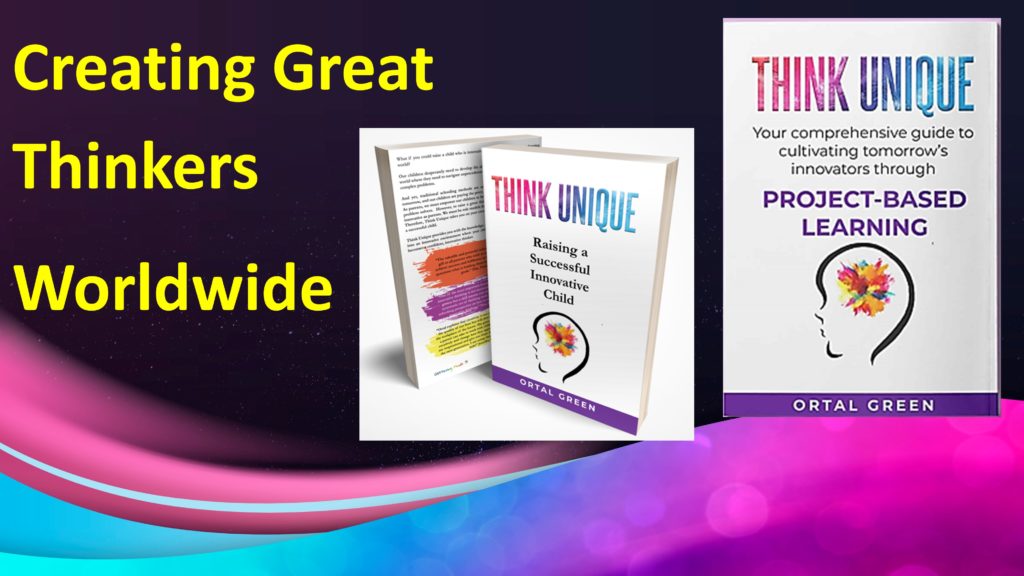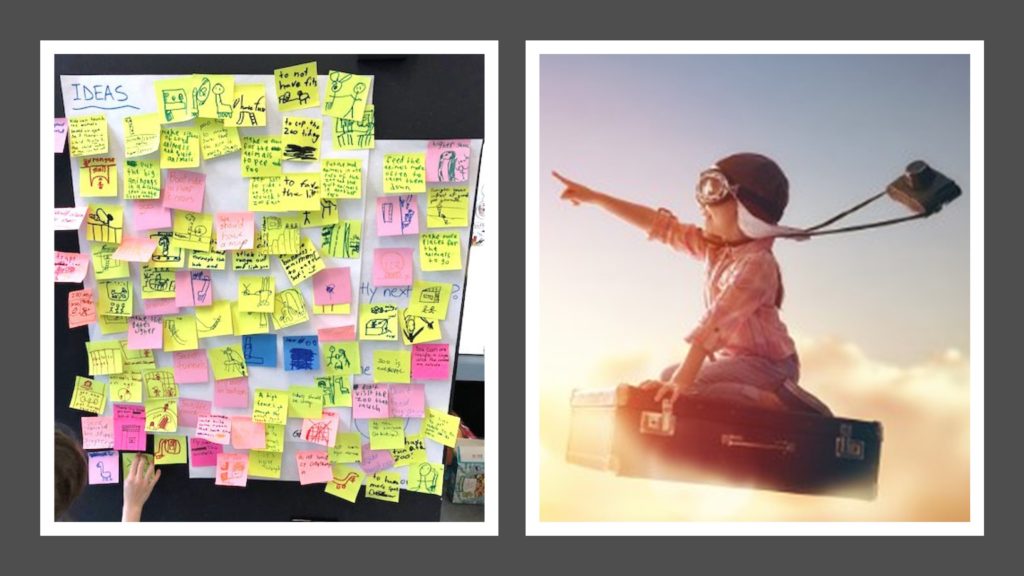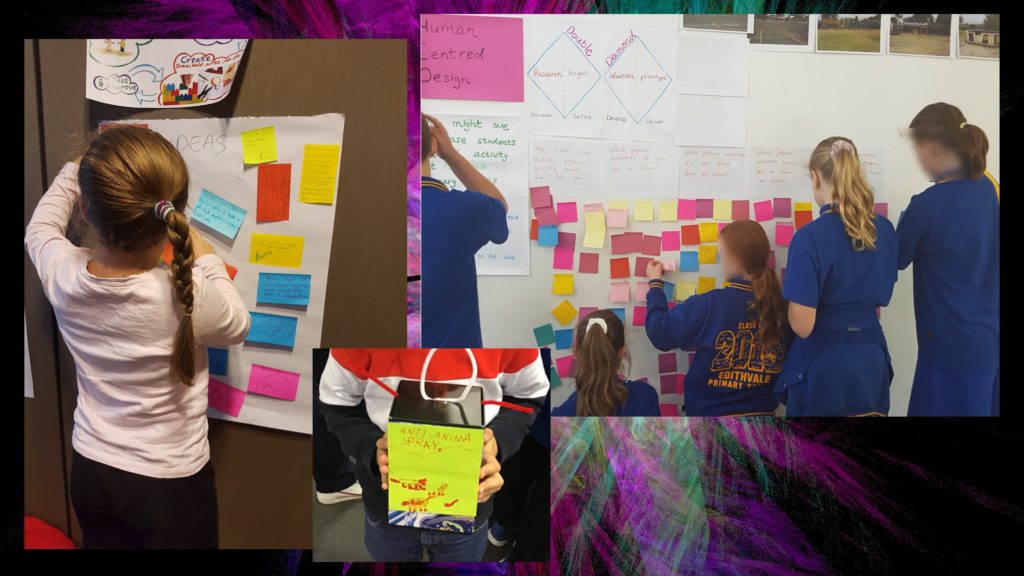Do Schools Kill Creativity? By Ortal Green

Education shapes our children’s future.
But does our current education system provide our children with the learning environment they need to thrive?
Unfortunately, our education system still operates on a twentieth-century traditional pedagogy where education has been about transferring knowledge to students. This pedagogy was designed for past requirements and doesn’t meet current needs.
Today, knowledge is free and easily accessible to all through the internet. This democratisation of education is excellent news since anyone with internet access can now learn almost anything they want. Furthermore, learning is not just an option anymore. It is a must. We all need to become lifelong learners to adapt to the constant changes within the job market.
However, with globalisation and technology transforming the world rapidly, merely transferring knowledge is no longer enough to succeed.
The Crucial Skills for Success
The twenty-first century brings a new kind of economy that requires different skills and a new mindset. Consequently, organisations are looking for talented employees at creative and critical thinking, problem-solving, collaboration, and communication; businesses are looking for workers with an innovative mindset.
A 2019 LinkedIn study of the expertise needed most by companies found that creativity was the top skill to develop,1 and according to a PricewaterhouseCoopers survey, 77 percent of CEOs struggle to find the innovative candidates that they need for their organizations.2
In another study by IBM in 2010, over fifteen thousand CEOs from sixty countries and thirty-three industries were interviewed. They found that creativity was named the most important leadership quality to meet the challenges of increasing complexity and uncertainty in the world.3
The demand for employees with these abilities will only continue to increase due to the exponential growth in automation and the use of machine learning and artificial intelligence. Creative thinking and an innovative mindset are the new basic skills that every child today needs to develop.
So how can we prepare the younger generation for the future of work? By adopting a new way of learning and teaching that meets the needs of the twenty-first century.
We can do so by adopting Design Thinking and the creative thinking process as a framework for teaching and learning.
I have been working with schools, teachers, parents, children, and corporate employees for many years. I have empowered many parents and teachers to provide children with an environment where they develop their creative thinking, problem-solving, empathy, collaboration, resilience, critical thinking and more.
I have seen the transformation firsthand, on the ground.
Therefore, there is no need to wait anymore for policymakers to slowly change existing policies and drive a top-down transformation of this massive education system. In fact, there is no time to waste: our children need this kind of education now.
We can create a wonderful learning environment by harnessing the power of Design Thinking and the creative thinking process.

What is Design Thinking?
At the highest level, Design Thinking is a problem-solving methodology, mindset and tools that enable you to develop innovative solutions. Learning and practising Design Thinking will help your students develop the skills they need for success today, cultivating aptitudes to problem-solve, be curious, creative and think critically, build resilience, empathy, and collaborate.
Moreover, Design Thinking goes beyond the specific knowledge-focused fields and lays a strong foundation for success in any career.
This process also develops a growth mindset. For example, Design Thinkers know that failure is part of the journey: they simply learn from it and start again.
As you probably know, today, we have complex global problems to solve, such as food security, children’s education, gender equality, and global warming, to name a few. These problems can’t be solved using the same thinking that created them: we need to develop a different kind of thinking. Design Thinking develops creativity and teaches us to find unusual connections, enabling us to arrive at unique solutions.
Many organisations already recognise Design Thinking as a powerful way to drive successful outcomes. The Bill and Melinda Gates Foundation uses this methodology to successfully solve some of the most complicated problems we face today, such as the eradication of polio. Moreover, many start-ups and companies such as Airbnb and 3M also use Design Thinking to drive their success.
Research Declares Design Thinking as the Paradigm Shift
Research by Lesley-Ann Noel and Tsai Lu Liub from North Carolina State University explored whether Design Thinking should be used as the new twenty-first-century education paradigm in primary schools.4 These researchers found that Design Thinking students develop collaborative problem-solving skills, creative and critical thinking, empathy, social skills, teamwork skills, and a growth mindset. Furthermore, they concluded that Design Thinking challenges students to find solutions to complex problems and supports students’ academic performance.
This research affirms that Design Thinking educators can make a lasting impact on students’ life skills by teaching them this process. It supports the inclusion of Design Thinking as professional development for teachers, as it offers strategies for improving teaching and learning. This type of professional development will expand and enhance teachers’ capabilities by helping them use Design Thinking to deliver existing content in a way that improves students’ academic performance.
The research concludes that exposure to Design Thinking education at the primary school level lays a solid foundation that would benefit all children, leading to greater engagement at school and contributing to their future success in their professional lives.

Parents and Teachers Benefit from Design Thinking
These benefits also apply to home educators and parents who want to take an active part in their child’s education and development.
To guide parents and teachers around the globe on how to use Design Thinking to help children develop their creative thinking and become great thinkers, I have written two comprehensive guides called “Think Unique”. One for parents and one for teachers.
Think Unique takes you on your own innovative journey, so you can confidently raise great thinkers.
Think Unique provides you with the knowledge, mindset, and activities to turn your home or classroom into an innovative environment where children develop curiosity and openness and become confident, innovative thinkers.
You can explore more about the book for teachers here.
And explore the book for parents here.

Feel free to reach out and start a conversation at – ortal@glitteringminds.com.au
Or visit the website – Glitteringminds.com.au
About the Author, Ortal Green

Ortal is a passionate educator that empowers teachers and parents to create tomorrow’s innovators.
She started her career as a computer scientist and worked for top global hi-tech companies such as IBM. Working at the forefront of this cutting-edge industry helped her understand the impact of technology on the future of work. Ortal saw the gap we have in education and the way to bridge it.
She co-founded “Glittering Minds” and designed a unique school program that provides the needed paradigm shift in education by introducing Design Thinking as the new pedagogy.
Ortal is also an author and a speaker.
You can watch a webinar with Ortal Green below, where she talks about her Design Thinking work in schools:
Notes
1 Amanda Van Nuys, “New LinkedIn Research: Upskill Your Employees with the Skills Companies Need Most in 2020,” LinkedIn, 28 Dec. 2019, www.linkedin.com/business/learning/blog/learning-and-development/most-in-demand-skills-2020.
2 “The Talent Challenge: Harnessing the Power of Human Skills in the Machine Age,” PwC, https://www.pwc.com/gx/en/ceo-survey/2017/deep-dives/ceo-survey-global-talent.pdf.
3 “Capitalizing on Complexity: Insights from the Global Chief Executive Officer Study,” IBM Institute for Business Value, Canada: Conference Board of Canada, 2010, https://www.ibm.com/downloads/cas/1VZV5X8J.
4 Lesley-Ann Noel and Tsailu Liu, “Using Design Thinking to Create a New Education Paradigm for Elementary Level Children for Higher Student Engagement and Success,” ResearchGate, 28 June 2016, www.researchgate.net/publication/308784004_Using_Design_Thinking_to_create_a_new_education_paradigm_for_elementary_level_children_for_higher_student_engagement_and_success.

